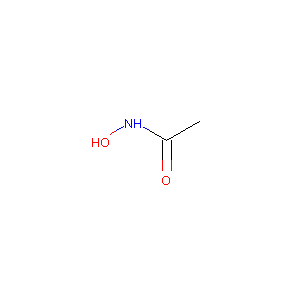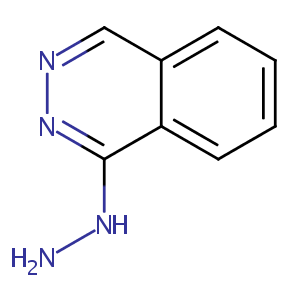| 1 |
Recurrent recessive mutation in deoxyguanosine kinase causes idiopathic noncirrhotic portal hypertension.Hepatology. 2016 Jun;63(6):1977-86. doi: 10.1002/hep.28499. Epub 2016 Mar 31.
|
| 2 |
FDA Approved Drug Products from FDA Official Website. 2009. Application Number: (NDA) 018749.
|
| 3 |
Hydralazine FDA Label
|
| 4 |
URL: http://www.guidetopharmacology.org Nucleic Acids Res. 2015 Oct 12. pii: gkv1037. The IUPHAR/BPS Guide to PHARMACOLOGY in 2016: towards curated quantitative interactions between 1300 protein targets and 6000 ligands. (Ligand id: 7326).
|
| 5 |
Enzymatic, immunological and phylogenetic characterization of Brucella suis urease. BMC Microbiol. 2008 Jul 19;8:121.
|
| 6 |
New bispyridinium oximes: in vitro and in vivo evaluation of their biological efficiency in soman and tabun poisoning. Chem Biol Interact. 2008 Sep 25;175(1-3):413-6.
|
| 7 |
Drugs@FDA. U.S. Food and Drug Administration. U.S. Department of Health & Human Services.
|
| 8 |
Prizidilol, an antihypertensive with precapillary vasodilator and beta-adrenoceptor blocking actions, in primary hypertension. Clin Pharmacol Ther. 1981 May;29(5):588-93.
|
| 9 |
N-acetyltransferase 2 genotype-dependent N-acetylation of hydralazine in human hepatocytes. Drug Metab Dispos. 2017 Dec;45(12):1276-1281.
|
| 10 |
Eukaryotic arylamine N-acetyltransferase. Investigation of substrate specificity by high-throughput screening. Biochem Pharmacol. 2005 Jan 15;69(2):347-59. doi: 10.1016/j.bcp.2004.09.014. Epub 2004 Nov 24.
|
| 11 |
A phase I study of hydralazine to demethylate and reactivate the expression of tumor suppressor genes. BMC Cancer. 2005 Apr 29;5:44.
|
| 12 |
Sympathetic activity in idiopathic dilated cardiomyopathy. Influence of captopril and hydralazine. Cardiovasc Drugs Ther. 1987 Aug;1(2):177-81. doi: 10.1007/BF02125471.
|
| 13 |
Antihypertensive drugs clonidine, diazoxide, hydralazine and furosemide regulate the production of cytokines by placentas and peripheral blood mononuclear cells in normal pregnancy. J Hypertens. 2006 May;24(5):915-22. doi: 10.1097/01.hjh.0000222762.84605.03.
|
| 14 |
Hydralazine inhibits human peritoneal mesothelial cell proliferation and collagen synthesis. Nephrol Dial Transplant. 1996 Nov;11(11):2276-81. doi: 10.1093/oxfordjournals.ndt.a027148.
|
| 15 |
Albumin Protects Lung Cells against Acrolein Cytotoxicity and Acrolein-Adducted Albumin Increases Heme Oxygenase 1 Transcripts. Chem Res Toxicol. 2020 Jul 20;33(7):1969-1979. doi: 10.1021/acs.chemrestox.0c00146. Epub 2020 Jun 29.
|
| 16 |
High-throughput measurement of the Tp53 response to anticancer drugs and random compounds using a stably integrated Tp53-responsive luciferase reporter. Carcinogenesis. 2002 Jun;23(6):949-57. doi: 10.1093/carcin/23.6.949.
|
|
|
|
|
|
|


